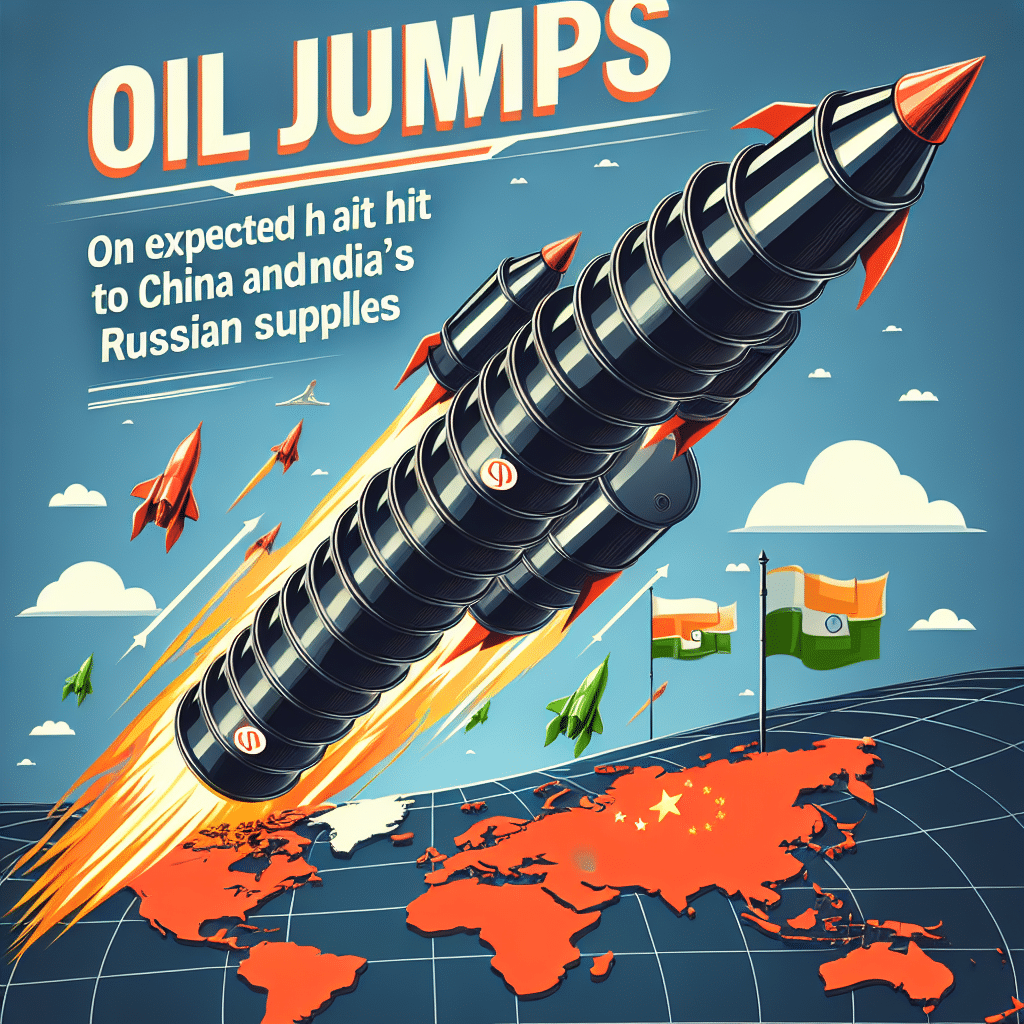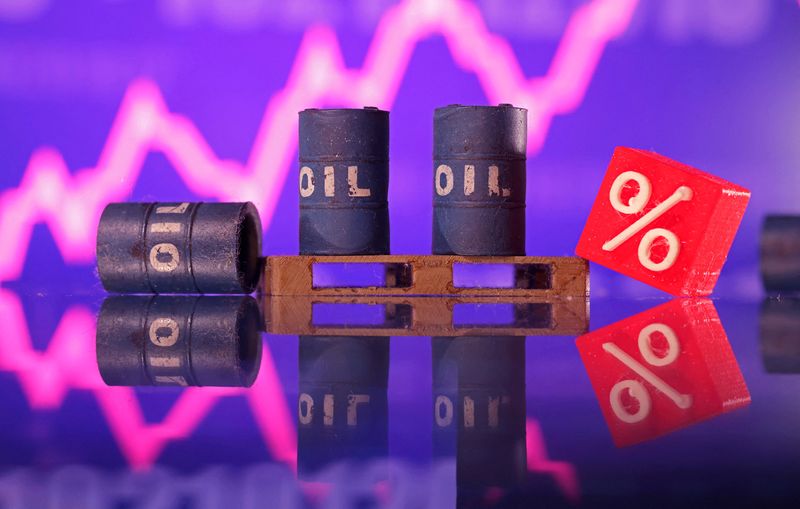[adrotate group="2"]
By Anna Hirtenstein
LONDON (Reuters) – Oil prices climbed for a third consecutive session on Monday, surpassing $80 per barrel and reaching their highest point in over four months. This increase is mainly attributed to broader U.S. sanctions on Russian oil and anticipated repercussions for exports to major consumers India and China.
Brent crude futures gained $1.68, or 2.1%, reaching $81.44 a barrel by 0858 GMT after hitting a peak of $81.49, the highest level since August 27.
U.S. West Texas Intermediate crude rose by $1.84, equivalent to a 2.4% increase, to $78.41 a barrel, following a high of $78.58, the highest since August 15.
Since January 8, Brent and WTI have seen nearly a 7% rise, spurred by the U.S. Treasury’s implementation of further sanctions on Russian oil last Friday. These sanctions target producers Gazprom Neft and Surgutneftegaz, impacting 183 vessels shipping Russian oil and aiming to curb revenue that supports Russia’s operations in Ukraine.
The new sanctions are expected to significantly impede Russian oil exports, compelling China and India to seek crude from regions such as the Middle East, Africa, and the Americas, leading to higher prices and increased shipping expenses, according to traders and analysts.
“There are significant concerns regarding supply disruptions in the market. The most extreme scenario for Russian oil is becoming increasingly plausible,” stated PVM analyst Tamas Varga. “However, it’s uncertain what the landscape will look like when Donald Trump assumes office next Monday.”
The sanctions incorporate a wind-down period lasting until March 12, meaning substantial disruptions might not occur immediately, Varga noted.
Goldman Sachs estimates that the vessels affected by the new sanctions were responsible for transporting 1.7 million barrels per day (bpd) of oil in 2024, or about 25% of Russia’s exports. Consequently, the bank is adjusting its Brent price projection upwards within a range of $70-85, as outlined by its analysts in a report.
Anticipated tighter supplies have also widened the monthly spreads for Brent and WTI to their most significant backwardation levels since the third quarter of 2024. Backwardation indicates a market condition where immediate prices are higher than future prices, reflecting tight supply.
Analysts at RBC Capital Markets noted that the increase in sanctioned tankers transporting Russian oil presents a significant logistical challenge for crude distributions.
Many of the tankers identified in the latest sanctions have been transporting oil to India and China after earlier Western sanctions and a price cap imposed by the Group of Seven (G7) nations in 2022 redirected Russian oil trade from Europe to Asia. Some vessels have also been involved in transporting oil from Iran, which is similarly subject to sanctions.
“The recent round of OFAC (U.S. Office of Foreign Assets Control) sanctions targeting Russian oil firms and a large number of tankers will significantly impact India,” remarked Harry Tchilinguirian, head of research at Onyx Capital Group.
According to JPMorgan analysts, while Russia has some flexibility despite the new sanctions, it will ultimately need to acquire non-sanctioned tankers or offer crude at or below $60 per barrel to qualify for Western insurance, as required by the West’s price cap.
[adrotate group="2"]






